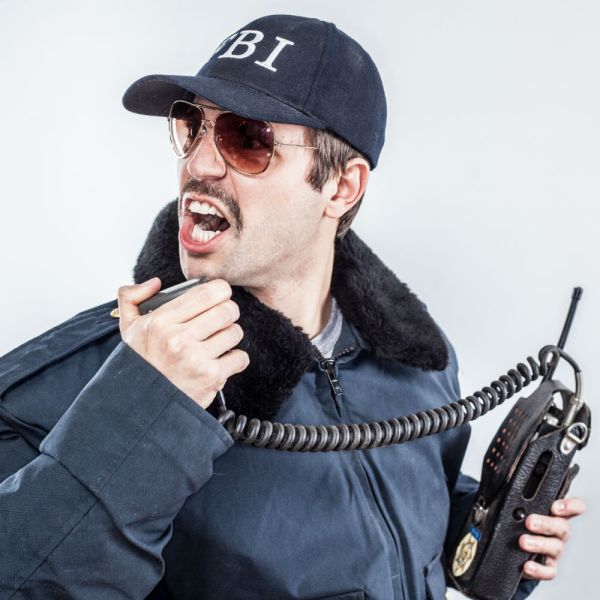For police, medics, firefighters, and other first responders, real-time access to key data and key people can be the difference between success and failure in a public crisis. They need rapid communication and data sharing across wide ranges of organizations that have direct or supporting roles in emergency response. Importantly they need to be able to pull additional resources onto the scene on-demand, such as explosives experts, tactical teams, or contaminant experts – or additional officers, even if those resources are off-duty and without access to their land mobile radio (LMR).
According to researchers, almost 70% of government agencies say giving first responders access to real-time data in the field is critical or very important, nearly 80% want to easily communicate with state and local agencies in surrounding areas, and almost 75% want to connect personnel across different networks and devices. Seems this is something we should do, right?
So why has it been so slow coming?
Overcoming the Challenges
 While most first responder organizations may already have their own communication and data sharing ecosystems and processes, they lack interoperability. On their own, their land-mobile radios (right) cannot securely collaborate with one another on a broader platform. Achieving ad-hoc and on-demand interoperability and incident coordination between them, no matter where they are and whether they are on or off duty, can only go so far with the commonly used LMR implementations.
While most first responder organizations may already have their own communication and data sharing ecosystems and processes, they lack interoperability. On their own, their land-mobile radios (right) cannot securely collaborate with one another on a broader platform. Achieving ad-hoc and on-demand interoperability and incident coordination between them, no matter where they are and whether they are on or off duty, can only go so far with the commonly used LMR implementations.
According to Bob Day, former U.S. Coast Guard CIO and Head of BlackBerry’s Federal Cybersecurity Operations Center, the first responder community needs a broader, cellular-based platform to rapidly establish secure communications and data exchange between multiple agencies. New smartphone-based secure communication solutions additionally complement LMRs in situations when those networks are congested and extend them with useful new features and workflows. Here are a few ways governments are working with BlackBerry and using these technologies to achieve instant interoperability and incident coordination.
Calling Tactical Teams
A U.S. state police force uses the BlackBerry AtHoc Emergency Communication solution to dramatically improve its ability to respond to any emergency that involves SWAT teams. The police force instantly and securely alerts officers, both on-duty and off-duty via smartphone. This enables officers to check in depending on their availability, time to scene, and expertise with the emerging situation.
With this solution, the agency can call on a specified number of additional police and specialists in a matter of minutes or even seconds, allow them to see all the relevant content, and communicate with other stakeholders – even interconnecting existing walkie-talkie-style LMRs operating on different frequencies – while they are approaching the scene.
Secure IM Frees Up the Radio
Secure instant messaging on a smartphone further allows foot, bike, or horse patrol officers to communicate with one another without having to tie up busy, congested LMR channels. Officers outside of patrol vehicles don’t have laptop access that other officers use to securely discuss operational issues, but they still need immediate information. For instance, when a neighborhood foot patrol officer stops a suspicious individual, they need to know whether other officers have had previous interactions with the suspect.
 Secure smartphone solutions allow them to communicate those details instantly. They can easily exchange voice notes, text, pictures, and location. They can also easily add others into their communication, seek assistance from the dispatch office, or request approval from a commander.
Secure smartphone solutions allow them to communicate those details instantly. They can easily exchange voice notes, text, pictures, and location. They can also easily add others into their communication, seek assistance from the dispatch office, or request approval from a commander.
Few IM apps are secure enough for police work. That’s why one Canadian Regional Police tactical team is using secure IM through BBM Enterprise on their mobile devices to coordinate response pre-incident deployment. Once a call for deployment is received from the communications center over the standard LMR/Computer Aided Dispatch (CAD) system, the officer in charge uses BBM Enterprise to communicate with both on-duty and off-duty tactical officers.
The officer in charge can then follow individual officers’ actual locations as they roll to the scene through BBM Enterprise’s instant location mapping. This has dramatically improved the team’s ability to respond quickly and effectively to incidents and to untether themselves from their desks. Most importantly, BBM Enterprise was easy to deploy, requiring no major IT changes or infrastructure investments.
Just Two Examples
These are just two ways first responder agencies are using BlackBerry software to achieve real-time communications and interoperability. If you’d like to learn more, visit BlackBerry for Government, where you can read case studies and gather more information about AtHoc, BBM Enterprise, and other software solutions designed to make government agencies more efficient, more connected, and more secure.
